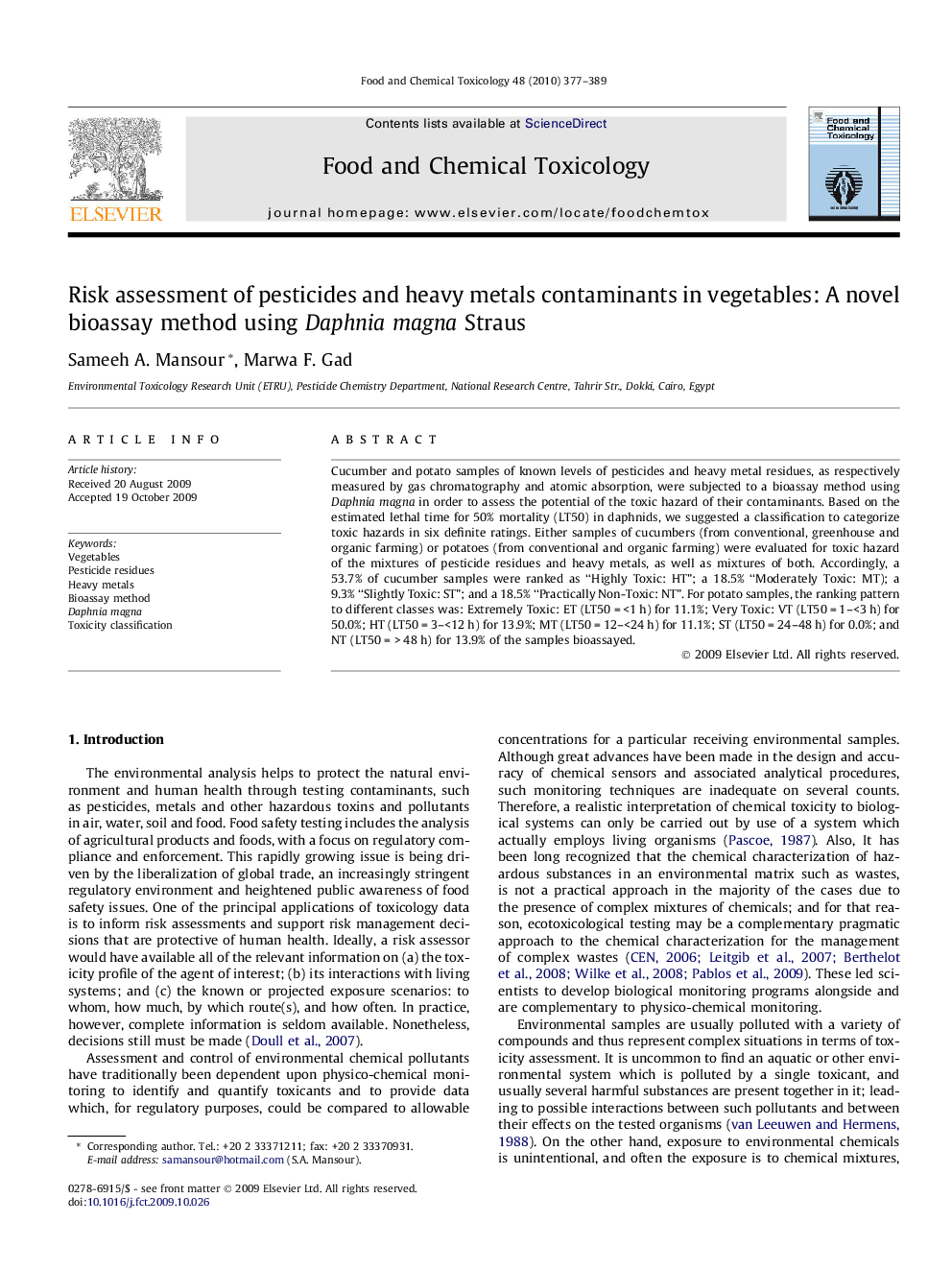| Article ID | Journal | Published Year | Pages | File Type |
|---|---|---|---|---|
| 2585872 | Food and Chemical Toxicology | 2010 | 13 Pages |
Cucumber and potato samples of known levels of pesticides and heavy metal residues, as respectively measured by gas chromatography and atomic absorption, were subjected to a bioassay method using Daphnia magna in order to assess the potential of the toxic hazard of their contaminants. Based on the estimated lethal time for 50% mortality (LT50) in daphnids, we suggested a classification to categorize toxic hazards in six definite ratings. Either samples of cucumbers (from conventional, greenhouse and organic farming) or potatoes (from conventional and organic farming) were evaluated for toxic hazard of the mixtures of pesticide residues and heavy metals, as well as mixtures of both. Accordingly, a 53.7% of cucumber samples were ranked as “Highly Toxic: HT”; a 18.5% “Moderately Toxic: MT); a 9.3% “Slightly Toxic: ST”; and a 18.5% “Practically Non-Toxic: NT”. For potato samples, the ranking pattern to different classes was: Extremely Toxic: ET (LT50 = <1 h) for 11.1%; Very Toxic: VT (LT50 = 1–<3 h) for 50.0%; HT (LT50 = 3–<12 h) for 13.9%; MT (LT50 = 12–<24 h) for 11.1%; ST (LT50 = 24–48 h) for 0.0%; and NT (LT50 = > 48 h) for 13.9% of the samples bioassayed.
